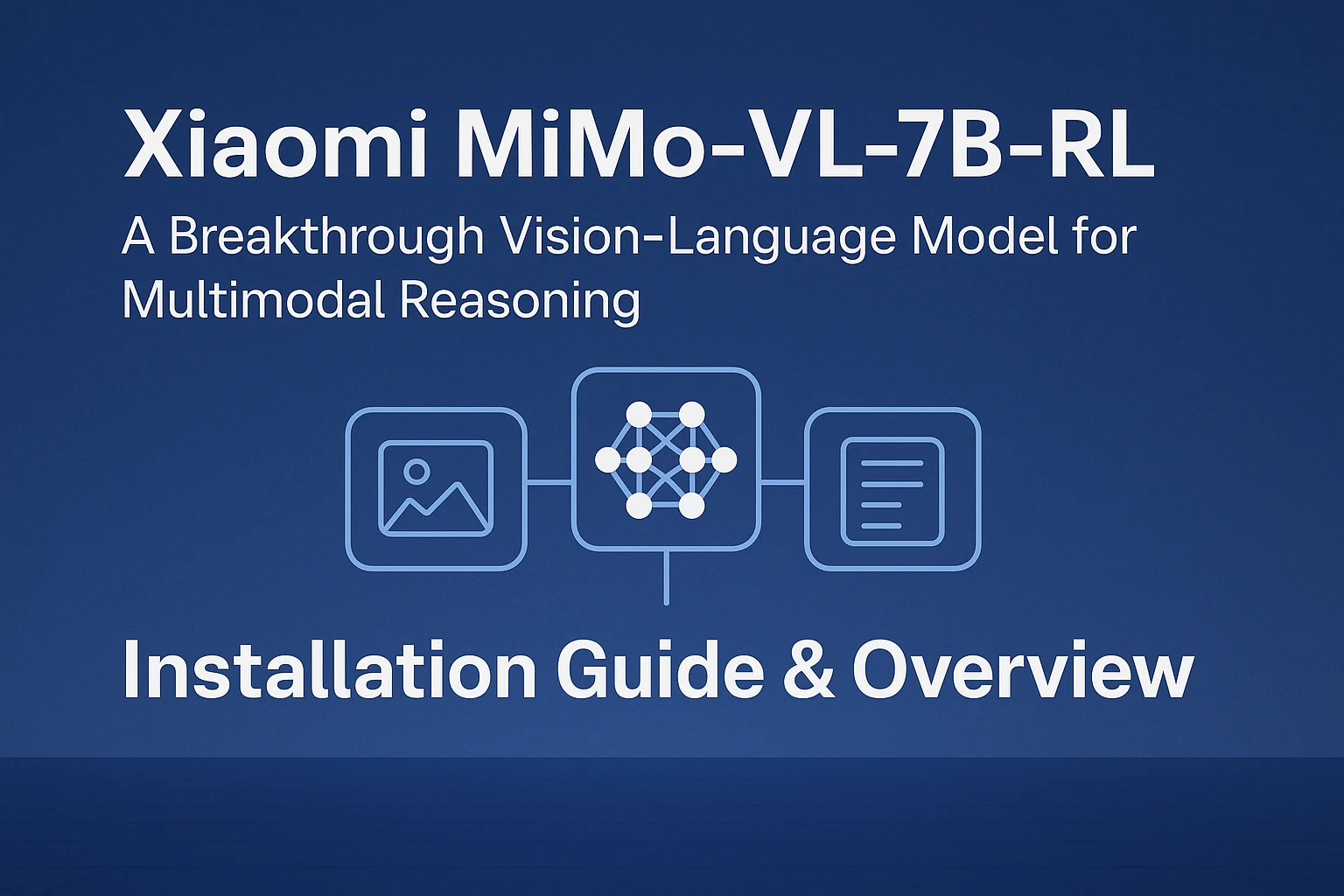Introduction
The artificial intelligence landscape has witnessed a groundbreaking advancement with the release of Magistral‑Small‑2506, Mistral AI’s first dedicated reasoning model. This innovative model represents a significant leap forward in transparent, multilingual AI reasoning capabilities. Built upon the foundation of Mistral Small 3.1 (2503), Magistral-Small-2506 introduces enhanced reasoning abilities through sophisticated Supervised Fine-Tuning (SFT) from Magistral Medium traces and Reinforcement Learning optimization.
What sets Magistral‑Small‑2506 apart from conventional language models is its ability to think through problems step-by-step, providing users with visible reasoning traces that mirror human thought processes. This transparency makes it an invaluable tool for professionals across various domains who require accurate answers and verifiable logic paths. The model’s open-source nature, released under the Apache 2.0 license, democratizes access to advanced AI reasoning capabilities, making it available for commercial and non-commercial applications.
What is Magistral Small 2506?
Magistral‑Small‑2506 is a compact yet powerful 24-billion-parameter large language model (LLM) developed by Mistral AI, designed with a strong emphasis on reasoning and instruction-following tasks. Built upon the Mistral Small 3.1 architecture, this model benefits from supervised fine-tuning (SFT) and reinforcement learning using traces from its larger sibling, Magistral Medium. It features a massive 128k-token context window ideal for handling long documents, and supports multilingual capabilities across 24 languages. Magistral‑Small‑2506 is optimized for cost-effective, high-throughput inference and is suitable for both commercial and open-source applications.
What Makes Magistral Small 2506 Special?
Advanced Reasoning Capabilities
Magistral-Small-2506 excels in multi-step logical reasoning, distinguishing itself from traditional language models through its structured approach to problem-solving. The model employs a unique chain-of-thought methodology that breaks down complex problems into manageable steps, providing users with transparent reasoning traces. This approach is particularly valuable for tasks requiring deep analysis, such as mathematical problem-solving, scientific reasoning, and complex decision-making processes.
The model’s reasoning framework follows a specific template that includes a thinking phase enclosed in <think> tags, where users can observe the model’s internal deliberation process. This transparency ensures that every conclusion can be traced back through its logical steps, making it ideal for applications where auditability and verification are crucial.
Multilingual Excellence
One of Magistral-Small-2506’s most impressive features is its comprehensive multilingual support. The model demonstrates proficiency across dozens of languages, including English, French, German, Greek, Hindi, Indonesian, Italian, Japanese, Korean, Malay, Nepali, Polish, Portuguese, Romanian, Russian, Serbian, Spanish, Swedish, Turkish, Ukrainian, Vietnamese, Arabic, Bengali, Chinese, and Farsi.
This multilingual dexterity enables the model to maintain high-fidelity reasoning across different languages and alphabets, making it particularly valuable for global organizations and researchers working in diverse linguistic environments. Unlike many AI models that perform optimally only in English, Magistral-Small-2506 provides consistent reasoning quality regardless of the input language.
Technical Specifications and Performance
Model Architecture and Requirements of Magistral Small 2506
Magistral-Small-2506 features 24 billion parameters, striking an optimal balance between performance and accessibility. The model is designed for efficient deployment, capable of running locally on a single RTX 4090 GPU or a 32GB RAM MacBook when properly quantized. This accessibility makes advanced AI reasoning capabilities available to individual researchers and smaller organizations without requiring extensive computational infrastructure.
The model supports a 128,000-token context window, though performance optimization is recommended for contexts up to 40,000 tokens. This substantial context capacity enables the model to handle lengthy documents and complex multi-turn conversations while maintaining coherent reasoning throughout.
Benchmark Performance
Magistral-Small-2506 demonstrates exceptional performance across various evaluation metrics. In mathematical reasoning assessments, the model achieved 70.68% accuracy on AIME2024 and 62.76% on AIME2025, showcasing its strong analytical capabilities. For scientific reasoning, it scored 68.18% on GPQA Diamond, while achieving 55.84% on Livecodebench (v5) for coding tasks.
| Benchmark | Magistral Small 2506 | Magistral Medium |
|---|---|---|
| AIME24 pass@1 | 70.7% | 73.6% |
| AIME25 pass@1 | 62.8% | 64.9% |
| GPQA Diamond | 68.2% | 70.8% |
| Livecodebench v5 | 55.8% | 59.4% |
These benchmark results position Magistral-Small-2506 as a highly competitive reasoning model, particularly impressive given its relatively compact size compared to larger proprietary models. The performance metrics demonstrate the model’s versatility across different domains, from pure mathematics to applied scientific problem-solving.
How to Run Magistral Small 2506 Locally with vLLM
To unleash the full potential of Magistral-Small-2506 locally, follow this detailed guide using vLLM, an efficient and scalable inference engine designed for LLMs.
Step 1: Install the Latest vLLM
pip install -U vllm \
--pre \
--extra-index-url https://wheels.vllm.ai/nightly
Step 2: Verify Mistral Support
Make sure mistral_common is properly installed:
python -c "import mistral_common; print(mistral_common.__version__)"Step 3: Launch the Model with vLLM
You can now serve Magistral-Small-2506 locally using:
vllm serve mistralai/Magistral-Small-2506 \
--tokenizer_mode mistral \
--config_format mistral \
--load_format mistral \
--tool-call-parser mistral \
--enable-auto-tool-choice \
--tensor-parallel-size 2Step 4: Run Sample Queries with OpenAI-Compatible API
Use the OpenAI Python client to connect to your local vLLM server:
from openai import OpenAI
from huggingface_hub import hf_hub_download
openai_api_key = "EMPTY"
openai_api_base = "http://localhost:8000/v1"
client = OpenAI(api_key=openai_api_key, base_url=openai_api_base)Now, list models and prepare your prompt:
models = client.models.list()
model = models.data[0].id
def load_system_prompt(repo_id: str, filename: str) -> str:
file_path = hf_hub_download(repo_id=repo_id, filename=filename)
with open(file_path, "r") as file:
return file.read()
SYSTEM_PROMPT = load_system_prompt(model, "SYSTEM_PROMPT.txt")
query = "Write 4 sentences, each with at least 8 words. Each sentence must have exactly one word less than the previous."
messages = [
{"role": "system", "content": SYSTEM_PROMPT},
{"role": "user", "content": query}
]
stream = client.chat.completions.create(
model=model,
messages=messages,
stream=True,
temperature=0.7,
top_p=0.95,
max_tokens=40960,
)
for chunk in stream:
content = getattr(chunk.choices[0].delta, "content", None)
if content:
print(content, end="", flush=True)Output
1. The quick brown fox jumps over lazy dog and yells hello.
2. I saw the cat on the stair with my hat.
3. The man in the moon came down quickly today.
4. A cat sat on the mat today patiently.More Details Check Huggingface: Huggingface Post
Find more technical details in the official release: Check Here
Conclusion
Magistral-Small-2506 represents a paradigm shift in accessible AI reasoning capabilities. By combining transparent reasoning processes, comprehensive multilingual support, and open-source accessibility, Mistral AI has created a model that democratizes advanced AI reasoning for organizations and researchers worldwide. The model’s impressive benchmark performance, coupled with its practical deployment options, makes it an attractive alternative to proprietary reasoning systems.
The significance of Magistral-Small-2506 extends beyond its technical capabilities to its potential impact on AI adoption across various industries. Its transparent reasoning processes address critical trust and interpretability concerns that have limited AI deployment in regulated sectors, while its multilingual capabilities open new possibilities for global applications.
Md Monsur Ali is a tech writer and researcher specializing in AI, LLMs, and automation. He shares tutorials, reviews, and real-world insights on cutting-edge technology to help developers and tech enthusiasts stay ahead.





